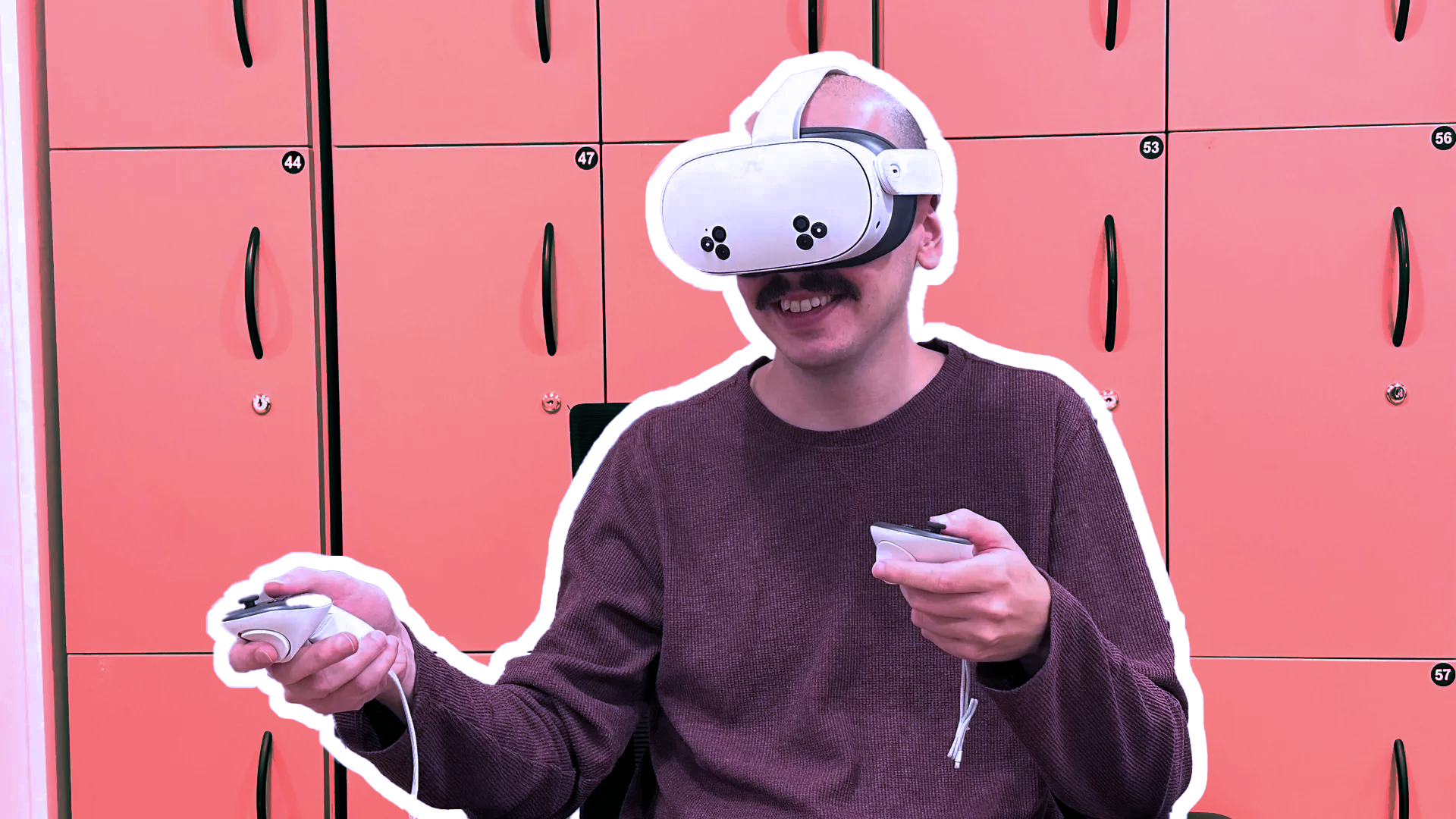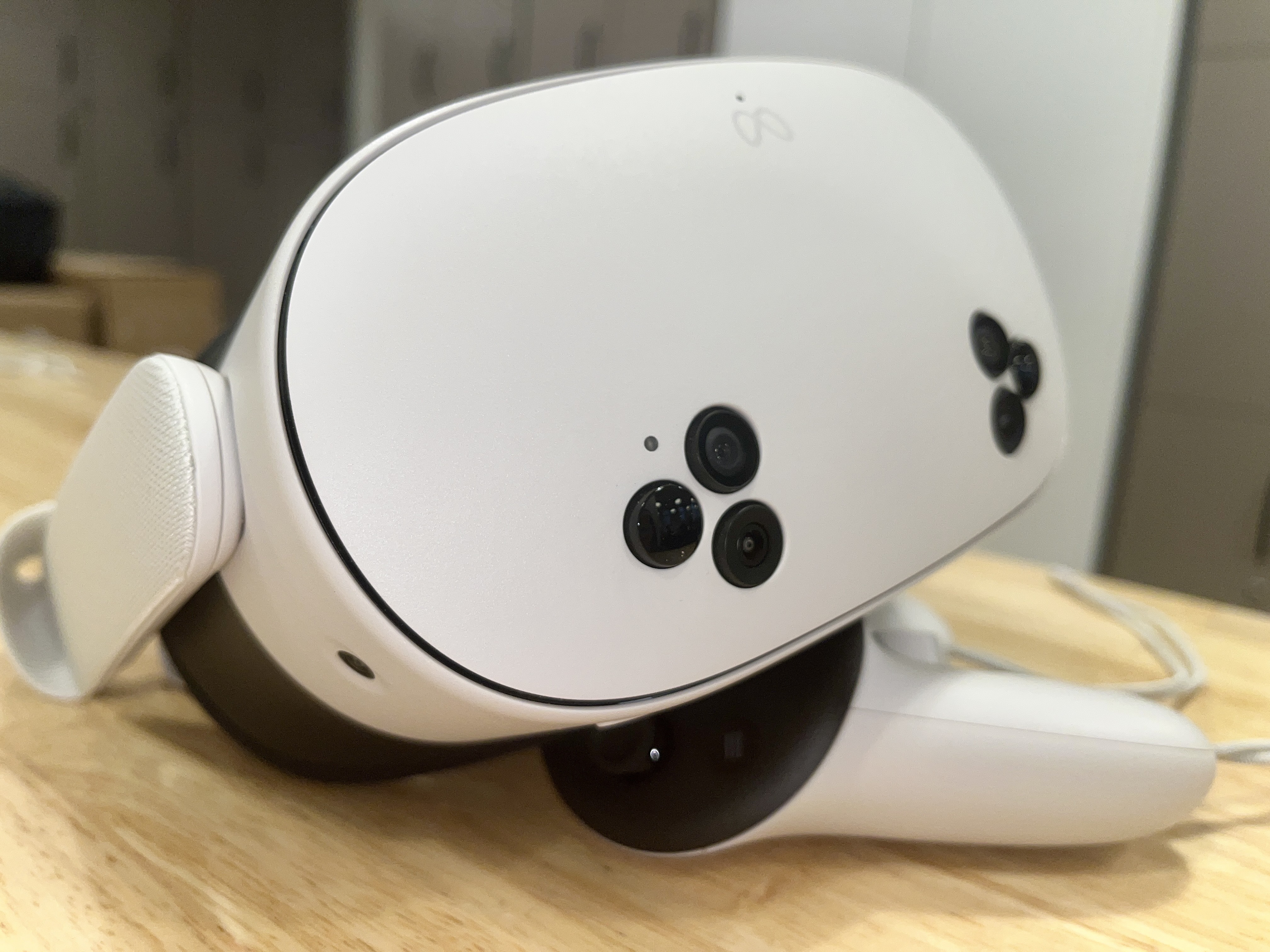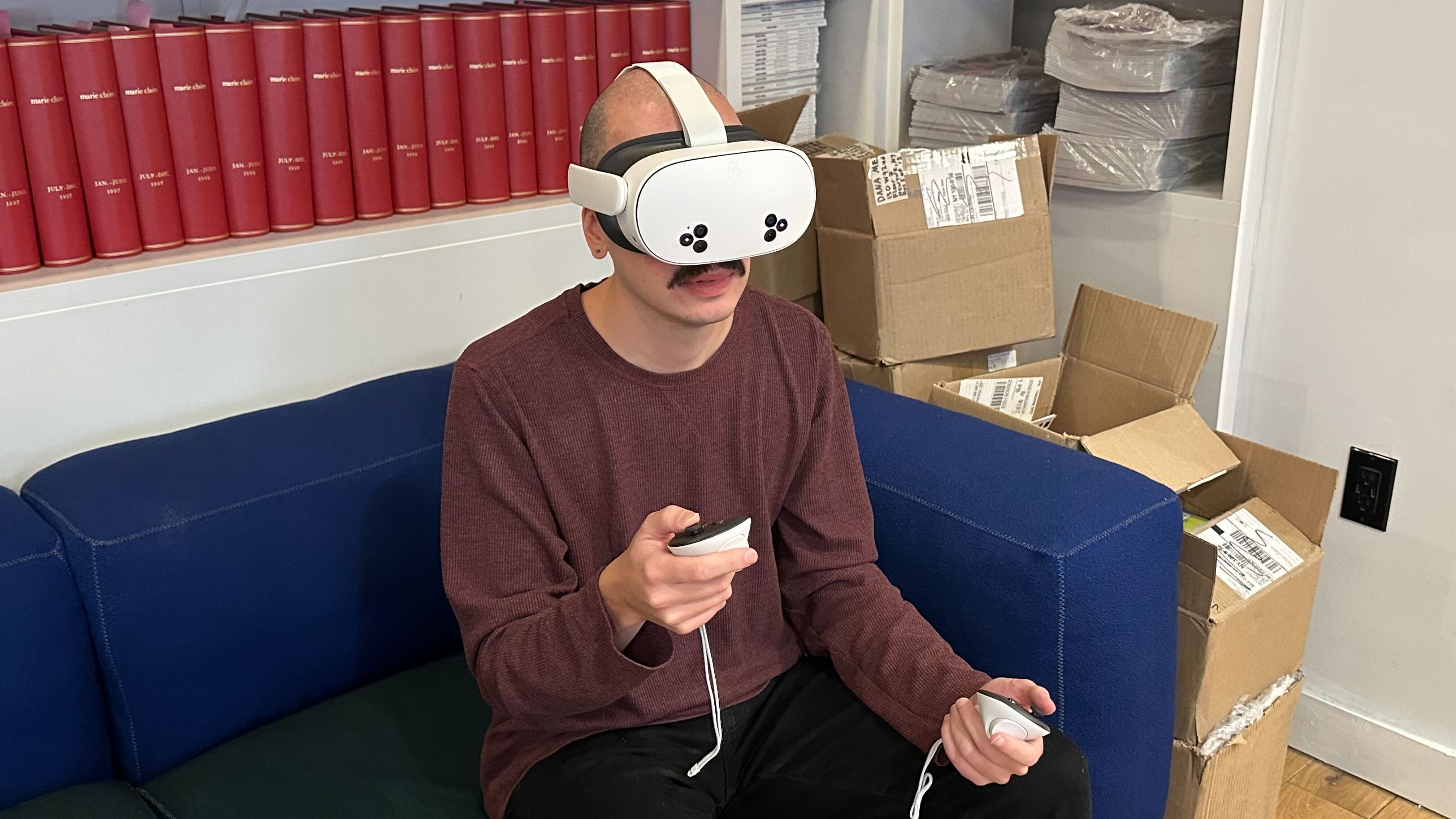
Everyone loves a good deal, but not everyone is willing to compromise for one.
So when rumors percolated that Meta's Quest 3S would cost just $299 — $200 below the price of the previously released Quest 3 — my alarm bells rang.
The question wasn't whether Meta could sell a headset for that amount — it's clearly been willing to be aggressive with pricing —but whether Meta could sell a headset for that amount that's actually worth buying.
After a week with the Quest 3S, I'm happy to report that I have the answer to that burning question. And it's exceptionally good news for anyone looking for an affordable way to get into mixed reality.
The "S" stands for "steal"
When you consider the Meta Quest 3S and its compromises, a few key questions arise.
The most significant material difference between the Quest 3 and 3S is the lens choice. While the Meta Quest 3 has short-barrel, "pancake" lenses, which emerged some 50 years ago, the Quest 3S opts for more affordable Fresnel lenses — a design first used in lighthouses nearly 200 years ago. The pancake lenses on the pricier Meta Quest 3 do a good job of mitigating visual artifacts, while the Fresnel peepers on the 3S fall short of the pristine visual quality of their more expensive counterparts.
Naturally, the next big question is: Will the Quest 3S deliver a notably worse-looking visual experience than the Quest 3?In my experience, no, not really.
I was kind of floored at how the Quest 3S delivered.
I put the Quest 3S through my usual tests — I watched YouTube (3D and 2D content), scrolled Instagram, and played around in mixed reality (First Encounters, which, yes, is a demo game but is generally a good test for mixed reality and environment mapping).
In those tests, I was kind of floored at how the Quest 3S delivered. Outside of some visual distortion at the periphery of the Quest 3S' field of view, I found the fidelity of all my experiences to be more than sufficient.
And, mind you, I'm not even the target demographic for this headset. Most people, if I had to imagine, aren't coming into the Quest 3S already owning a Quest 3 like I do. Instead, they're most likely first-time VR/AR headset buyers. As a result, they won't have the same point of comparison.
Usually, that would be an issue — after all, if you don't know what you're missing, how can you know if a gadget is actually worth the money? In this case, however, as far as I'm concerned, that potential knowledge gap doesn't matter.
Even if you can enumerate the differences between the Quest 3 and Quest 3S, I'm willing to wager you won't regret buying Meta's most affordable headset.
Proper passthrough and a dutiful display

Before using the Quest 3S, my next biggest question was whether it could deliver the same level of passthrough as the Quest 3. From a camera standpoint, there's no reason to think that the Quest 3S wouldn't be up to snuff — it has similar outward-facing sensors like the Quest 3, albeit in a more bug-like cluster arrangement as opposed to a vertical alignment.
That said, mixed reality is still Quest 3's biggest selling point, and any change that might disrupt XR experiences is worth watching.
Like the visual fidelity of my previous experiences, I didn't notice much of a difference at all. While playing First Encounters, the Quest 3S mapped my living room with ease and rendered the game's fuzzy aliens around corners, under my couch, and dropping from the ceiling.
Mixed reality is still Quest 3's biggest selling point
Even more impressive is that it seemed to do all that while also managing to do something better — hand tracking.
As observed by UploadVR, the Quest 3S has actually demonstrated better low-light hand and head tracking than the Quest 3. As someone whose apartment is perenially cave-like, I was excited to see if that alleged improvement was true, and I have to say — the Quest 3S impressed again.
Even in my dark, first-floor, New York apartment, hand tracking on the Quest 3S felt very smooth, especially while playing games in mixed reality, arguably one of the more important purposes of adept tracking.
In addition to passthrough difference, the Quest 3S's lower resolution was quite noticeable. While the Quest 3 has a resolution of 2,064 by 2,208 per eye, the Quest 3S has a noticeably lower resolution of 1,832 by 1,920 per eye. I'd be lying if I said I didn't notice the difference, but if you asked me whether I thought the bump up in resolution was worth spending $200 to buy the Quest 3, I'd have to consider it seriously.
That being said, your tolerance for a lower resolution will depend on what exactly you plan on using the Quest 3S for. If you're the type of person who wants to hunker down and spend an extended amount of time in your headset watching a movie (i.e. someone who wants a more Vision Pro-like experience) then you might feel compelled to shell out more money for a more premium display.
If you're someone who wants to dip their toes into mixed reality or VR and aren't necessarily concerned with having a more premium experience, then the Quest 3S is basically a no-brainer.
Who should buy the Quest 3S?

Sometimes, success is all about knowing your audience.
When it comes to the burgeoning world of VR and XR, Meta seems to know exactly who its audience is. While Apple's Vision Pro is an impressive headset with an incomparably premium display and first-in-class UI, most people don't know enough about XR or VR to justify its $3,500 price tag.
By lowering the barrier to entry, the Quest 3S represents an incredibly rare opportunity for XR newbies to upgrade hardware without breaking the bank.
The Quest 3S represents an incredibly rare opportunity for XR newbies
And on that front, I can't think of a better way to get your toes wet. As someone who's used the Quest 3 and the Vision Pro (to a lesser extent), I can say with certainty that Meta's $300 Quest 3S delivers all of the highs of its $500 Quest 3 even if all the premium perks aren't necessarily present.
Is it technically an inferior product in terms of visual fidelity? Yes. Does that difference create a notably inferior experience? In my opinion, not really. The Quest 3S nails all of the fundamentals of XR headsets as we know them and even manages to excel over the Quest 3 in some ways.
In addition to the price being right, the Quest 3S has sufficient resolution, great hand tracking, proper XR passthrough, and many of the same perks as its more expensive counterpart, including the same processor, equally adept outward-facing camera sensors, the same controllers, similar battery life, and almost 1-1 form factor and weight.
In my experience covering XR — nay, gadgets in general — it's not often you get this much of a price drop without some major compromises in quality, but Meta managed to do it and, in the process, gave us a deal that's tough to pass up.
More from Laptop Mag
- Meta Quest 3 vs. Meta Quest 3S: A VR headset head-to-head
- Meta Quest 3 review: Elite features at an affordable price
- Meta Quest 3S is here, and I've 3 reasons for Quest 2 owners to get it
- I tried the Meta Quest 3S: Is it game over for the Apple Vision Pro?
- How Meta's Quest 3S could spell disaster for the Apple Vision Pro
- Meta unveils its Quest 3S headset as the most affordable way to get a proper taste of mixed reality







